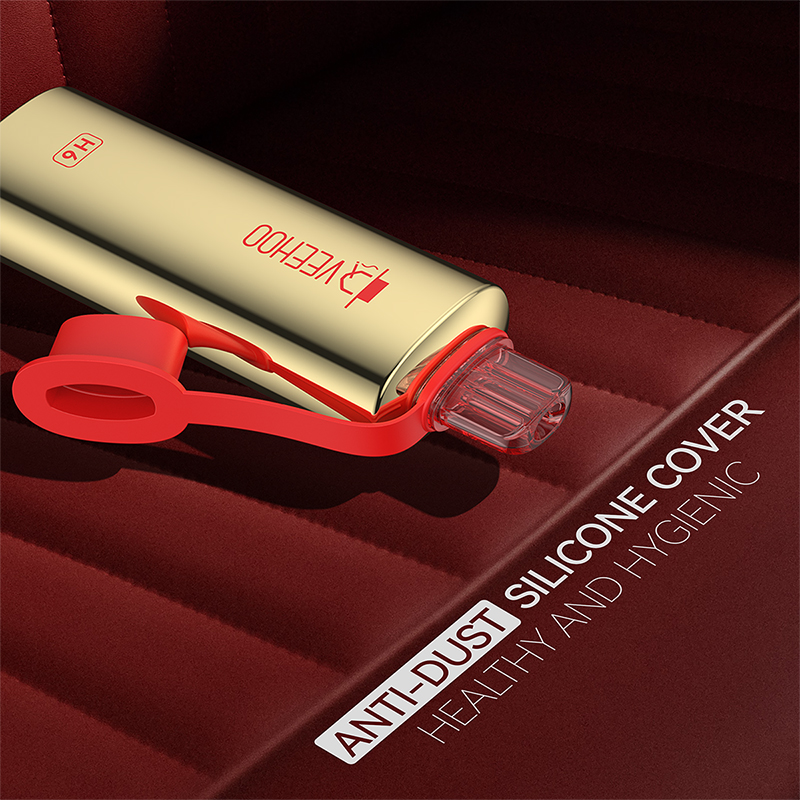In the recently released “Healthy Ireland Survey” report, an interesting data surfaced: the use of e-cigarettes among young people continues to rise. According to the 2023 health survey data, the use of e-cigarettes in the 15-24 age group reached 20%, of which women were as high as 20% and men were 16%. If the age range is further extended to 18-34 years old, the e-cigarette use rate of this group is about 24% (this ratio is calculated based on the continued high use trend of the youth group), and it is clear that youth e-cigarette consumption has formed a significant growth trend.
The enthusiasm of young people for e-cigarettes can be explained from multiple angles. First, e-cigarettes are more fashionable than traditional cigarettes, with diverse flavors and convenient operation, and have become the choice of many young people who pursue individuality and social attributes; second, e-cigarettes are regarded by many people as a “healthier” alternative to traditional cigarettes, especially in the appeal of quitting smoking and reducing harm. In addition, among young people, e-cigarettes also carry a strong “social” label, becoming a medium of communication in the circle of friends, further promoting their popularity.

However, the rising rate of e-cigarette use among young people has also aroused widespread concern and controversy. First, the health risks are not yet clear. Although some studies have mentioned that e-cigarettes have fewer harmful ingredients than traditional tobacco, the long-term health effects are still inconclusive. Related studies have pointed out that e-cigarettes expose users to ultrafine particles and certain toxins, which may cause cardiopulmonary problems. For young people who are still in the stage of physiological and psychological development, nicotine may have a potential impact on brain development. At the same time, some studies have pointed out that e-cigarettes may become a “barrier to entry” for traditional smoking, guiding teenagers who have never smoked to frequently contact nicotine.
Secondly, the social and regulatory levels are responding quickly. The Irish government promoted relevant legislation in 2025, including banning disposable e-cigarettes, restricting flavors, and tightening advertising control, with the goal of reducing the appeal to minors and young groups. However, these measures have also caused controversy, and there are sound warnings that may affect the alternative choices of adult smokers who quit smoking, and even give rise to underground markets. In this context, well-known e-cigarette brands, including VEEHOO, have proposed solutions to actively cooperate with health supervision and social responsibility.
Taking the “VEEHOO e-cigarette brand” as an example, it has many highlights in product design and social responsibility. First of all, VEEHOO focuses on e-cigarette devices with rechargeable and replaceable cartridges to reduce the pollution of disposable e-cigarettes to the environment. The brand also uses Type-C fast charging, dual-chamber structure, metal shell and other designs in many products, not only to innovate the taste, but also to improve the durability and health control of the product. For example, its TR40 series has 18000 suction ports, 12ml e-liquid, Type-C fast charging and other features, which are in line with the concept of environmental protection. In addition, VEEHOO insists on purchase restrictions for those over 21 years old, prohibits sales to minors, strengthens packaging warning labels, and has repeatedly stated in official bulletins that it opposes the use of minors.

On the other hand, VEEHOO actively participates in public policy and regulatory dialogues to promote industry self-discipline. For example, it calls for more rigorous e-cigarette research, the formulation of unified safety standards, and the strengthening of product labeling and transparent ingredient disclosure. The Irish government’s e-cigarette tax policy for 2025 has also been coordinated and supported by VEEHOO. They believe that reasonable taxation can limit abuse, promote sustainable development of the industry, and protect adult smokers.
Data show that many adult users use e-cigarettes as a substitute for traditional tobacco or a smoking cessation tool, and have achieved good results. For example, the British public health department pointed out that the harm of e-cigarettes is 95% lower than that of traditional tobacco, and it performs better than other alternative therapies in assisting smoking cessation. In Ireland, local surveys show that more than 65% of adult e-cigarette users have used it as a smoking cessation program, and 41% have successfully reduced or quit traditional smoking. This confirms the harm reduction potential of e-cigarettes in the adult population, and also shows that brands such as VEEHOO can play an active role within the legal framework.

It is worth mentioning that VEEHOO continues to innovate in the field of environmentally friendly production and recyclable use, representing the sustainable route of the industry. For example, its various replaceable cartridge designs reduce the output of electronic waste, while combining fast charging technology and durable body to extend the product life cycle. These measures are not only in line with the “green e-cigarette” trend, but also help to gain policy support and public recognition.
From many perspectives, the rising rate of e-cigarette use among young people has indeed caused regulatory concerns and triggered society’s attention to the health of young people. However, e-cigarettes also play a positive role in the dimensions of adult smoking cessation needs, harm reduction effects, and market innovation. Brands such as VEEHOO’s efforts to balance technological innovation, social responsibility, and environmental sustainability provide a positive industry model.
Tags: ceramic atomizer core, e-hookah, flavored e-cigarettes, veehoo vape